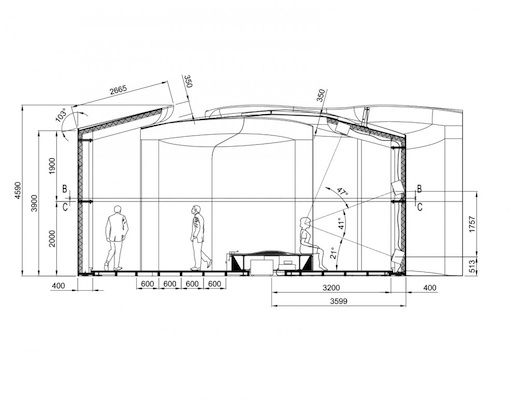 Field Day. Pic: Neil Thomson
Field Day. Pic: Neil Thomson
Cheryl Tipp’s June highlights:
Last month was great, mainly because it was chocker with sound-related shenanigans. I’d gone into June on a high, having been part of the Caught by the River gang at the Field Day Festival in May. As well as co-hosting a London themed sound quiz, I also got the opportunity to chair a field recording panel discussion with a great bunch of people – Tom Western, Jonny Trunk, Ian Rawes and Caught by the River regulars Rob St John and Chris Watson.
Next up was a trip to Oxford for the Sound Diaries symposium How are Field Recordings changing the World? organised by SARU members Felicity Ford and Paul Whitty. I was invited to join David Hendy, writer and presenter of the recent BBC Radio Four series ‘Noise: a Human History’ and Sybella Perry for the conveniently entitled ‘Listening to the Past’ session. I say conveniently because I’m fascinated with the early days of field recording and have done a fair bit of research on those pioneers who in the 1930s were determined to beat the odds and record the sounds of wild animals in their natural habitat. With a mixture of field recordings and a few snippets from interviews with such luminaries as Ludwig Koch and Carl Weismann, I was able to spend an enjoyable 20 minutes playing a bunch of archival recordings to virgin ears. One of my favourites was a clip from an interview with wildlife sound recordist Vic Lewis who, in the 1950s, had the cheek to sneak into Windsor Great Park just before dawn and plug his recording equipment into one of the recently installed streetlights. Armed with a ladder and a set of cables, Vic whipped off the streetlight cover, did a bit of DIY electronics to power his recorder, got the desired dawn chorus recording, repaired the light and then sauntered off home with a cheeky grin on his face. Vic was nothing if not resourceful.
Back in London I went to the opening of the BE OPEN Sound Portal, temporarily erected in the grounds of the Chelsea College of Art & Design and featuring sound works created by students from the college as well as CRiSAP and Central Saint Martins. For a brief time our group was transported from the streets of Pimlico to new, sometimes fantastical, worlds that together created a memorable experience. Though fairly tanked up on free wine I can still remember pieces such as Strata which took the listener on an acoustic journey through three interwoven levels of London. Beginning with the sounds of the underground and concluding with the whispering of wind and birdsong in the treetops of our great city, this piece was a real highlight.
I also went to a fascinating and slightly bizarre talk about BE OPEN Sound Portal (EVP) a couple of weeks ago. Joe Banks, Research Fellow at Goldsmiths, took the audience on a whistlestop tour through various EVP recordings. These recordings supposedly contain voices of the dead that have somehow been picked up by tape recorders and other electronic devices. Though not a new member of the EVP club, I could certainly appreciate how people who wanted to believe could convince themselves that they were really hearing disembodied voices coming through the static from beyond the grave.
Perhaps the biggest pleasure was seeing the latest Antidote to Indifference fanzine gradually take shape. What started life as an idea soon developed into a collection of Word documents, url links and scribbled notes scattered between my desk, handbag and various notebooks (God knows why I don’t just stick to the one notebook as having a few on the go is really counterproductive). This conglomeration was then transformed by the very talented Carol Briggs into a beautiful publication that I’m very proud to have been a part of.
Oh and I finally managed to finish Little Dorrit, all 826 pages of it. I think this deserves a special mention as it took up four months of my life and weighed a bloody ton.
Cheryl Tipp is the curator of wildlife sound recordings at the British Library.
